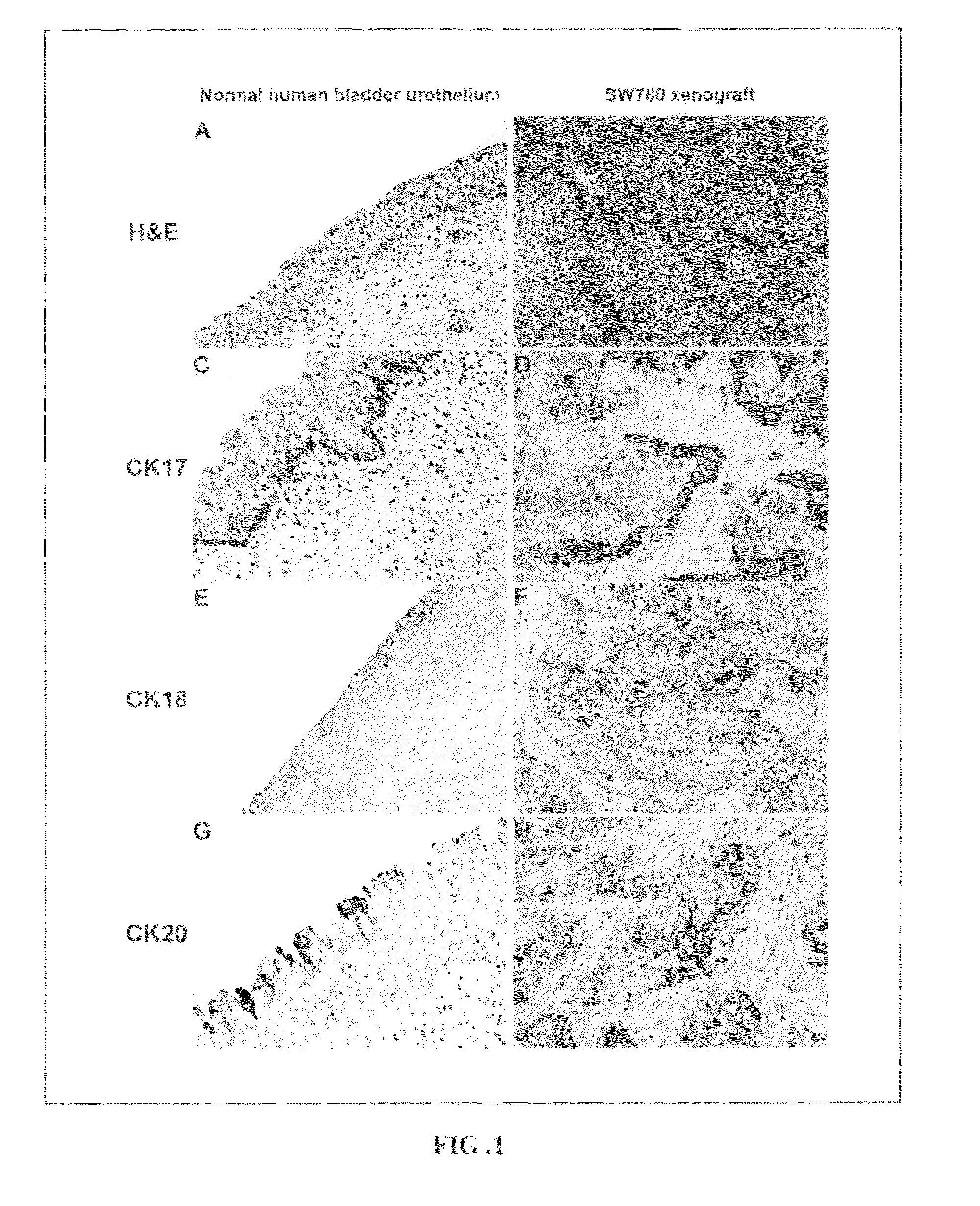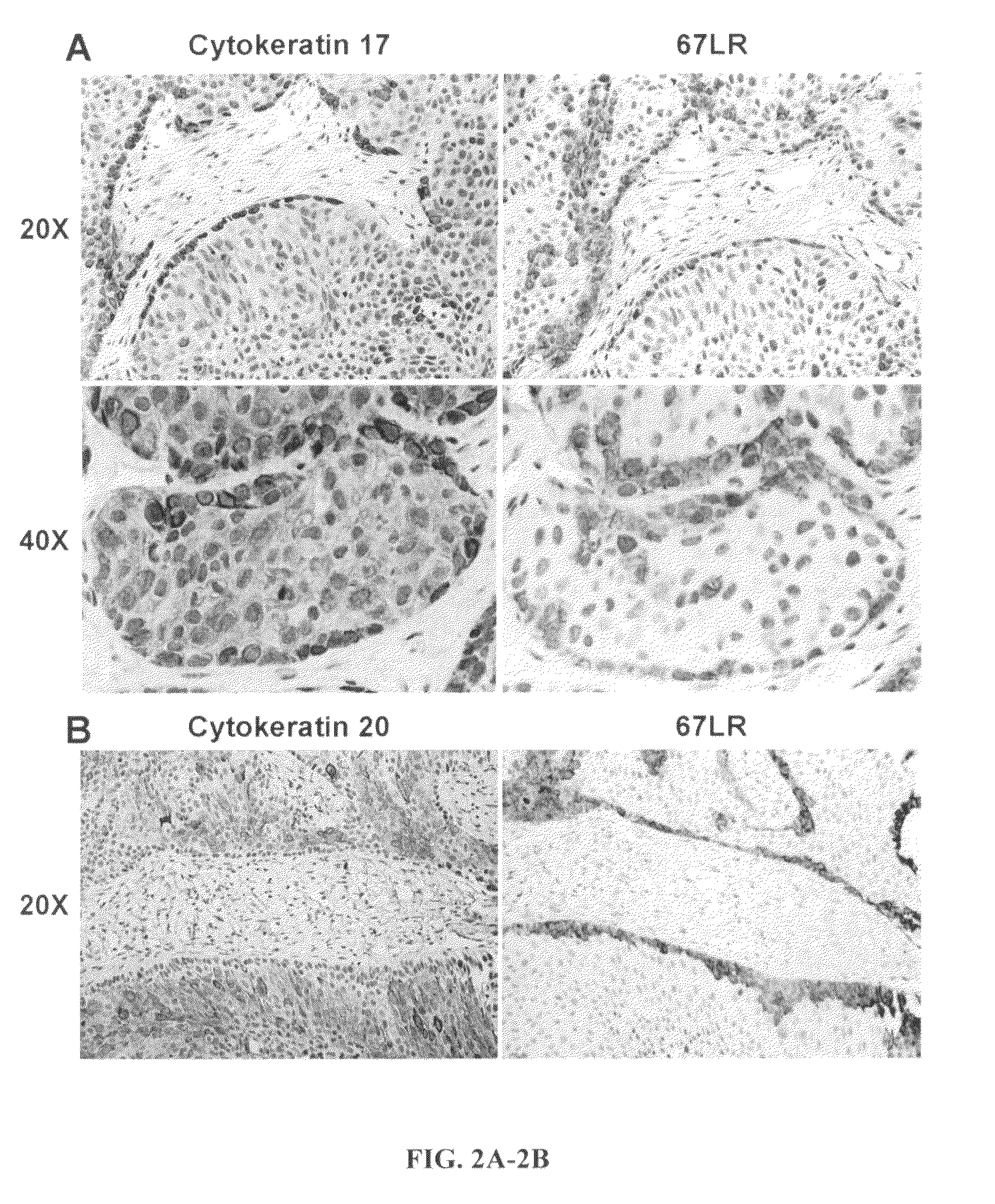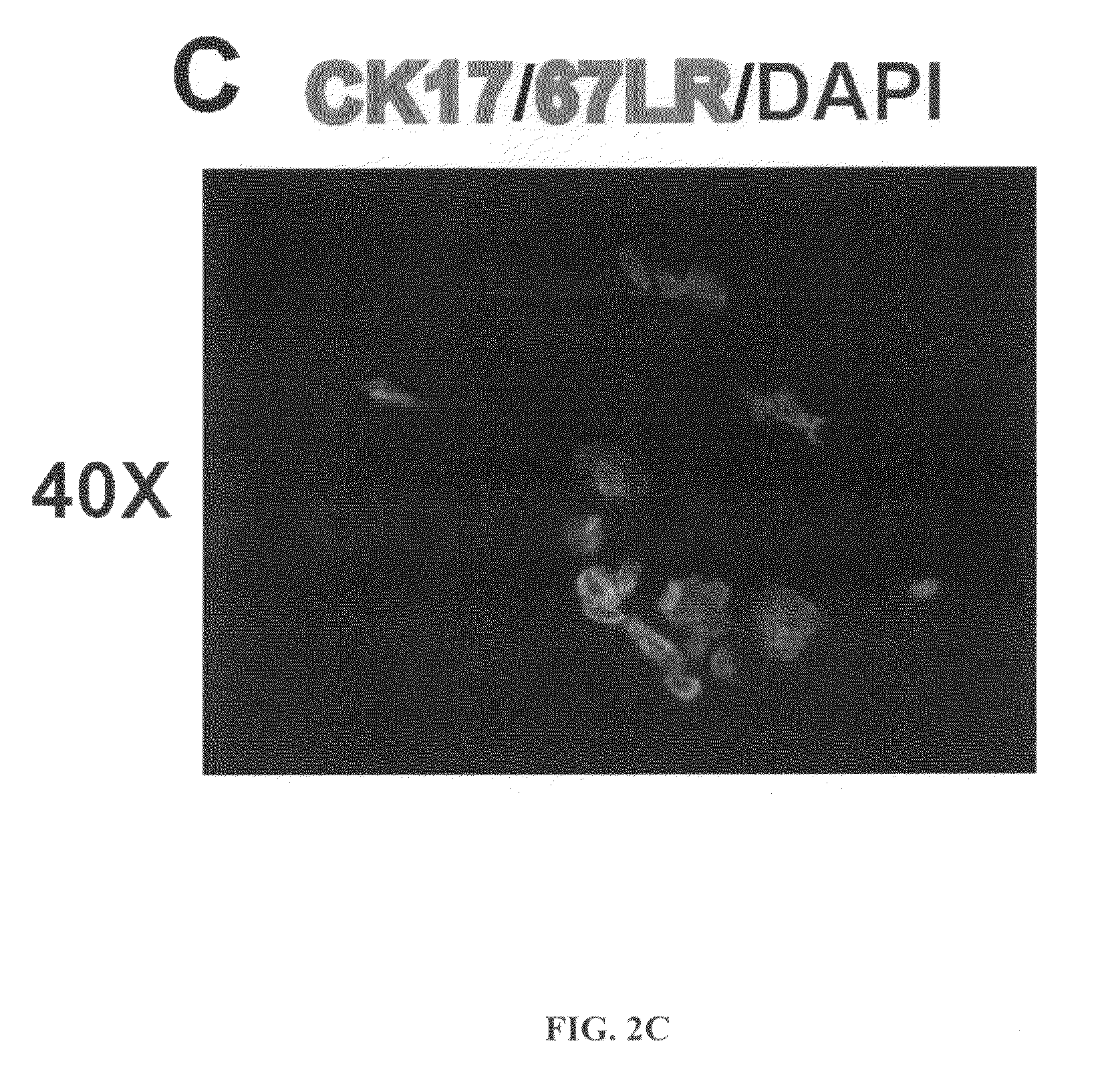Urothelial differentiation of urothelial carcinoma: a bladder cancer stem cell model
a bladder cancer and stem cell technology, applied in the field of cancer treatment, can solve the problems of imposing toxic effects on cancer cells, limited overall survival benefit of chemotherapy, radiation and other modalities including newer targeted therapies, and chemotherapeutic agents are notoriously toxic, so as to reduce the toxicity associated, avoid or reduce adverse or unwanted side effects, and improve the efficacy of therapeutic modalities
- Summary
- Abstract
- Description
- Claims
- Application Information
AI Technical Summary
Benefits of technology
Problems solved by technology
Method used
Image
Examples
Embodiment Construction
[0090]The present invention provides a method of treating cancer in a patient (e.g., a human patient) in need thereof, the method comprising administering a therapeutically effective regimen, the regimen comprising administering to a patient in need thereof a compound that binds 67 laminin receptor (67LR). The present invention also provides a method of treating cancer in a patient (e.g., a human patient) in need thereof, the method comprising administering a therapeutically effective regimen, the regimen comprising administering to a patient in need thereof a compound that targets 67 laminin receptor (67LR). Non-limiting examples of compounds include, but are not limited to, proteinaceous molecules, including, but not limited to, peptides (including dimers and multimers of such peptides), polypeptides, proteins, including post-translationally modified proteins, conjugates, antibodies, antibody fragments, and antibody conjugates.
[0091]In particular, the present invention provides a ...
PUM
| Property | Measurement | Unit |
|---|---|---|
| period of time | aaaaa | aaaaa |
| period of time | aaaaa | aaaaa |
| period of time | aaaaa | aaaaa |
Abstract
Description
Claims
Application Information
 Login to View More
Login to View More - R&D
- Intellectual Property
- Life Sciences
- Materials
- Tech Scout
- Unparalleled Data Quality
- Higher Quality Content
- 60% Fewer Hallucinations
Browse by: Latest US Patents, China's latest patents, Technical Efficacy Thesaurus, Application Domain, Technology Topic, Popular Technical Reports.
© 2025 PatSnap. All rights reserved.Legal|Privacy policy|Modern Slavery Act Transparency Statement|Sitemap|About US| Contact US: help@patsnap.com



